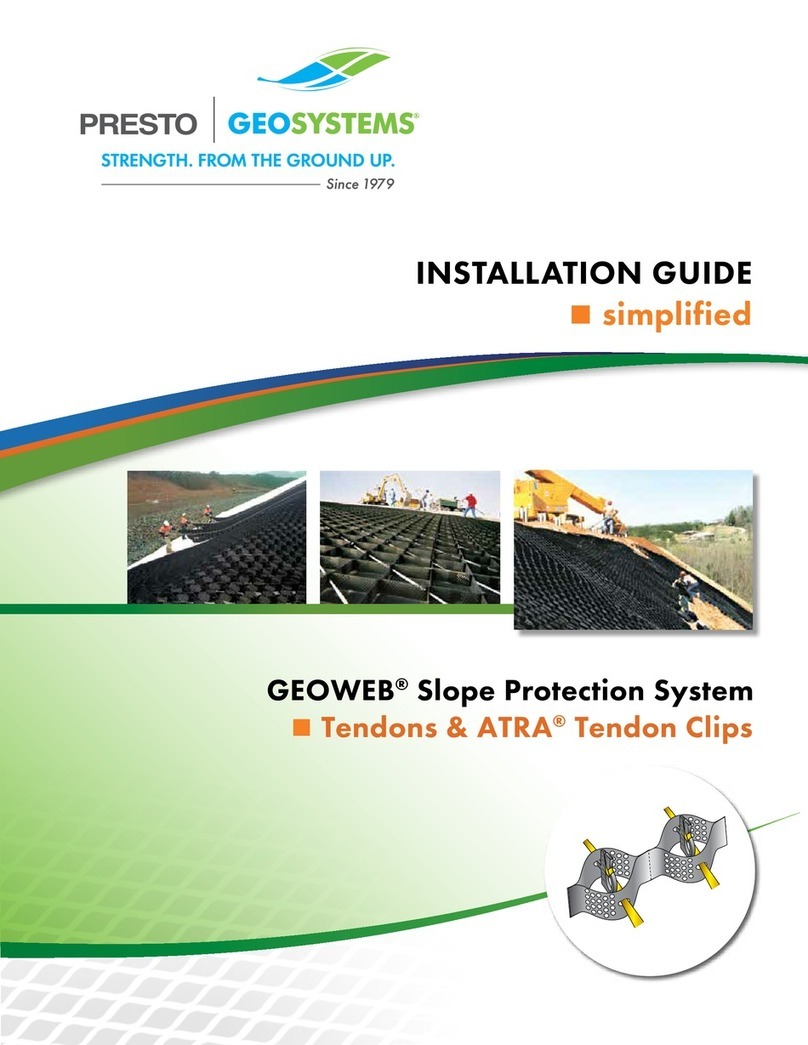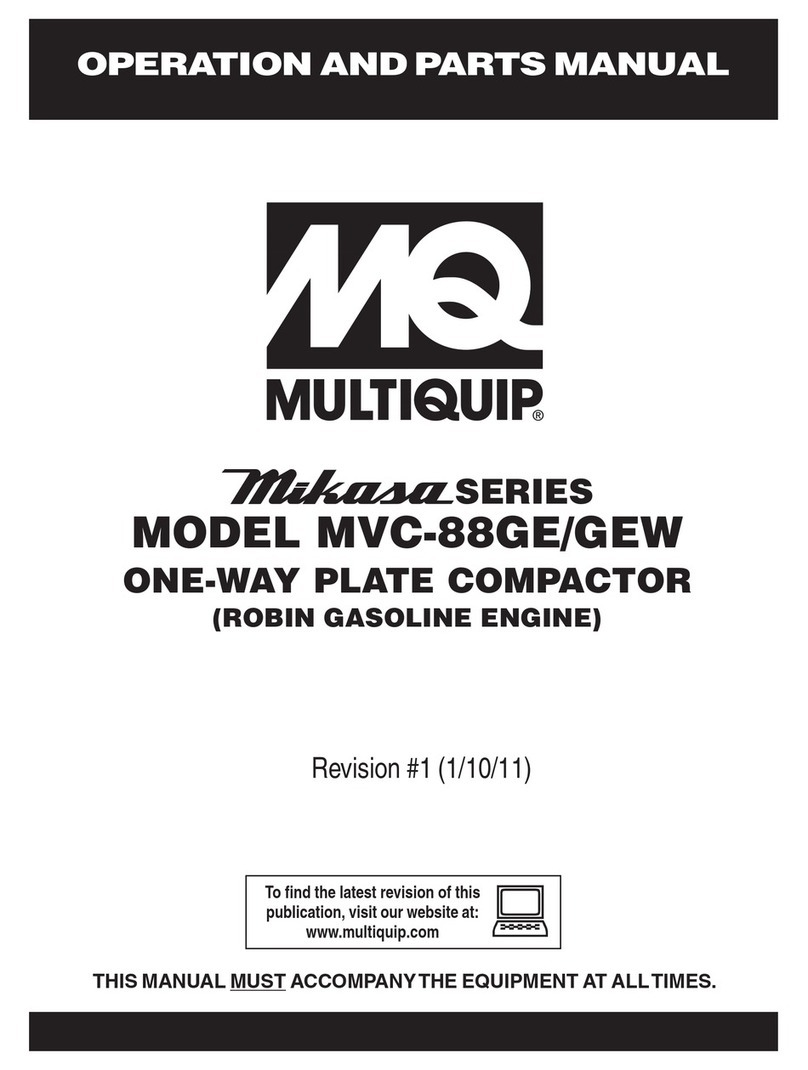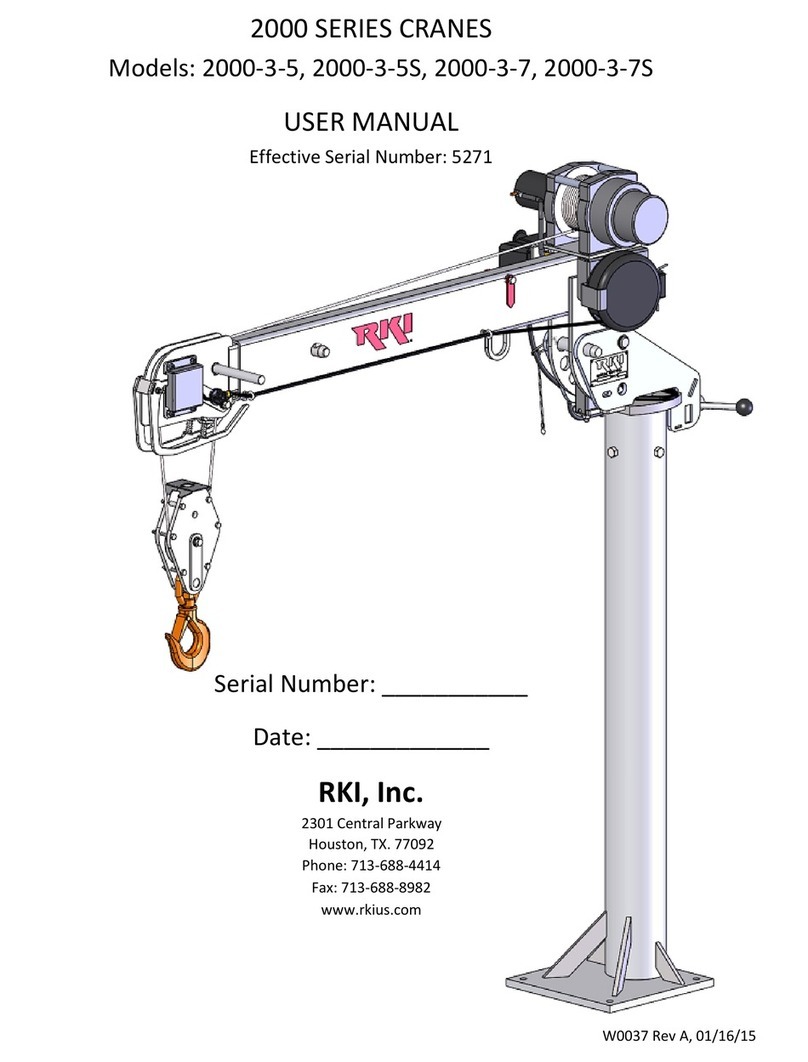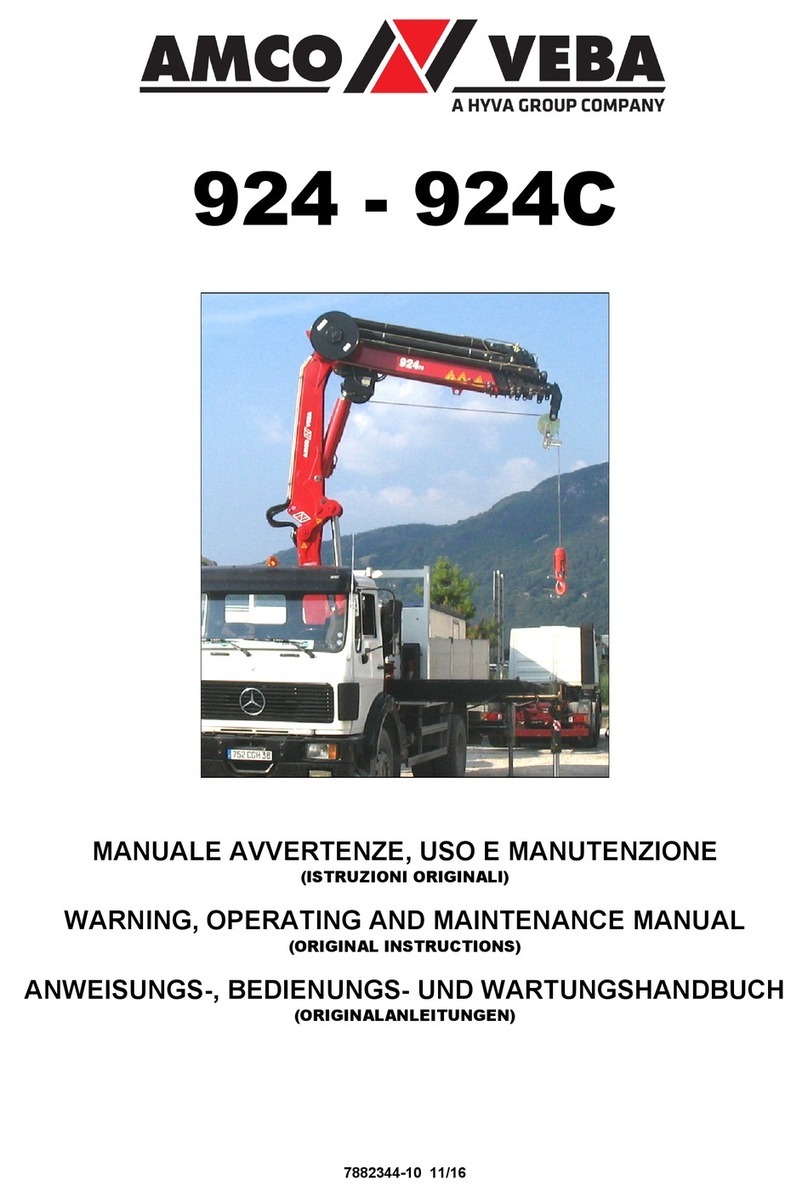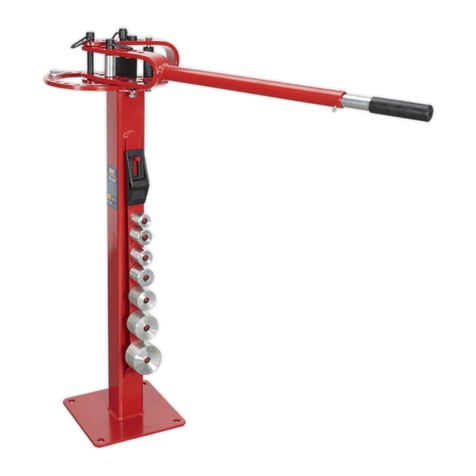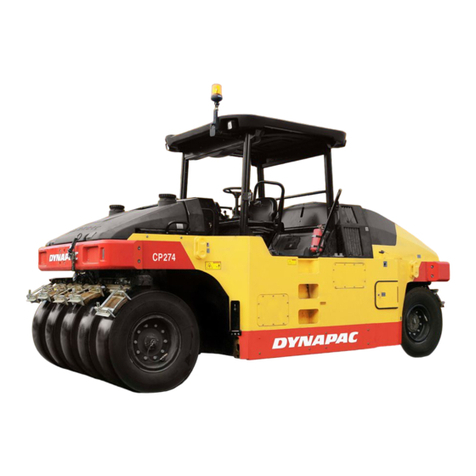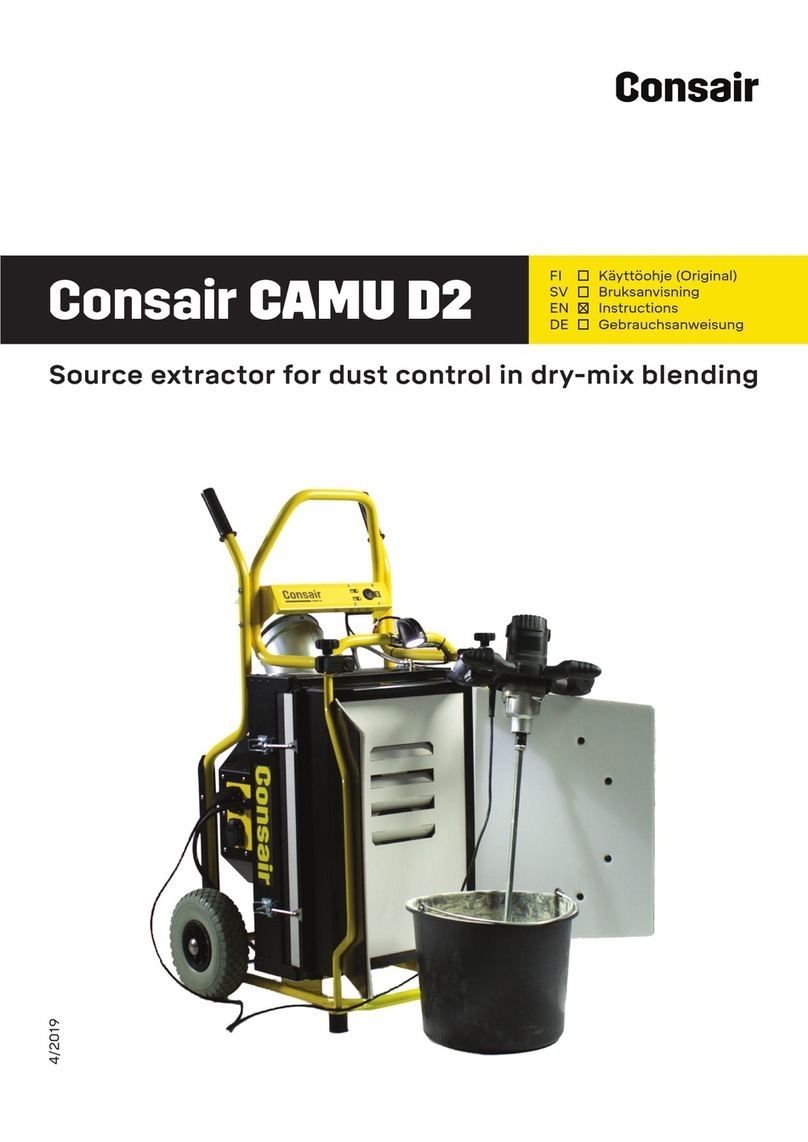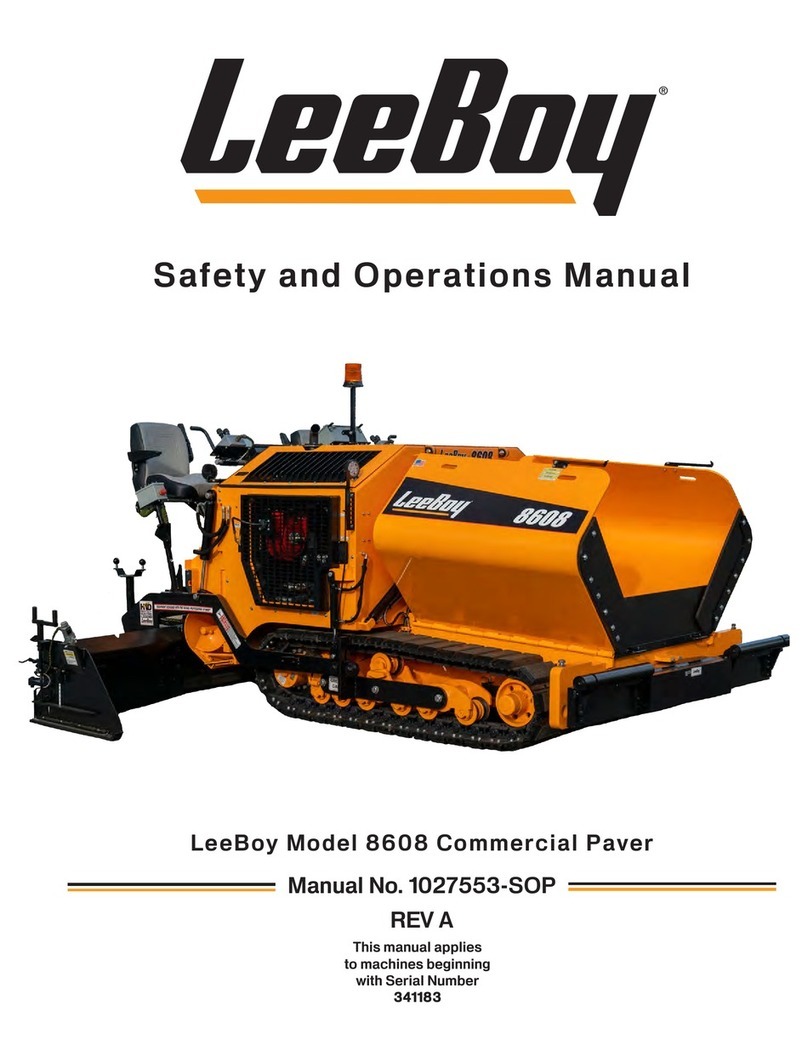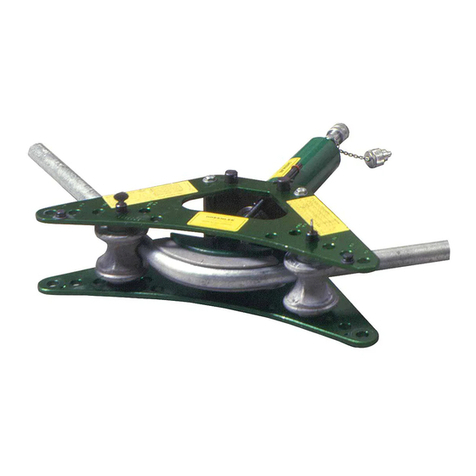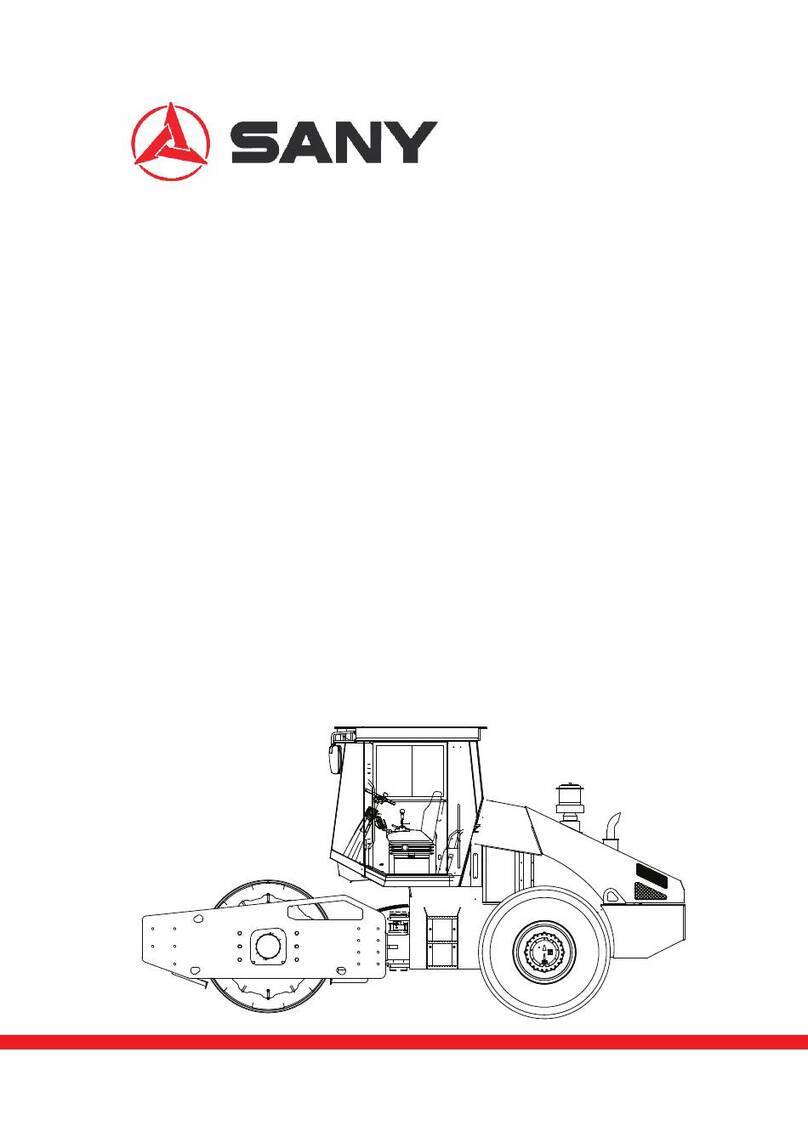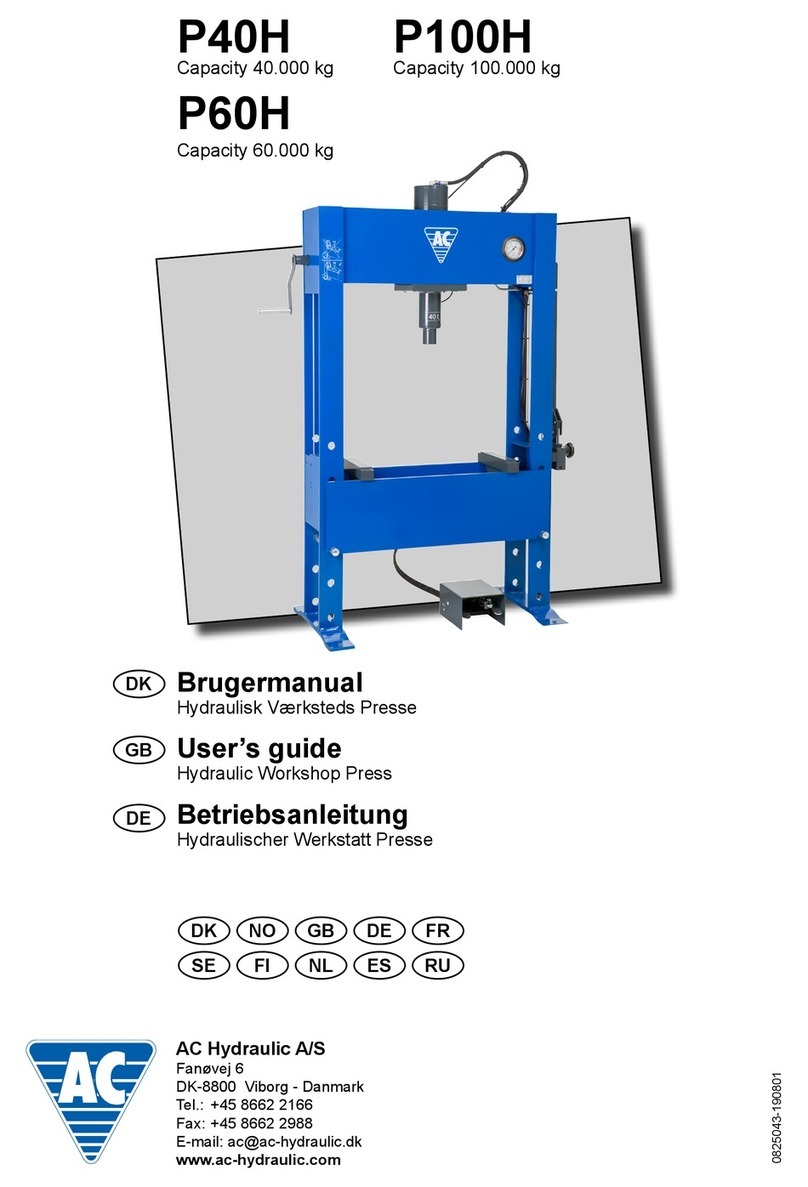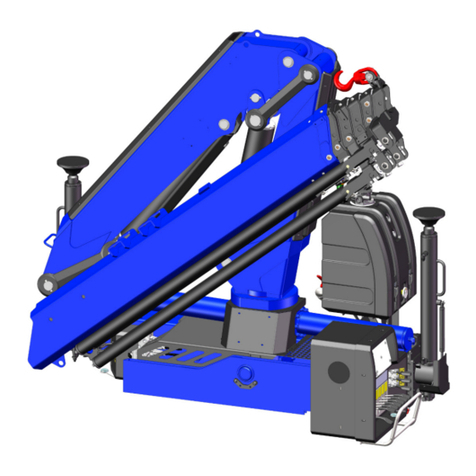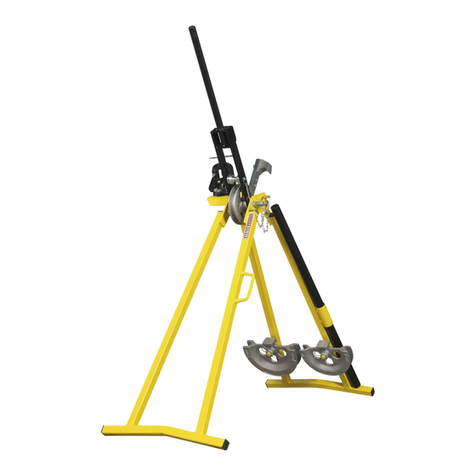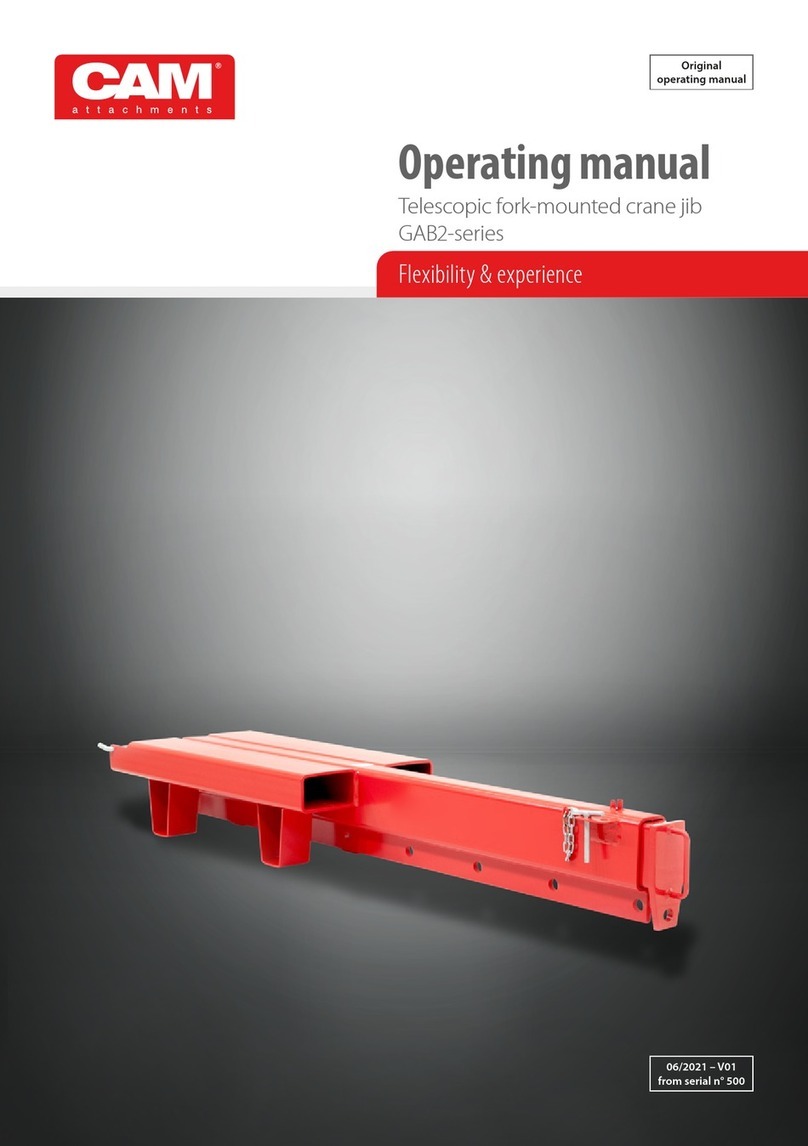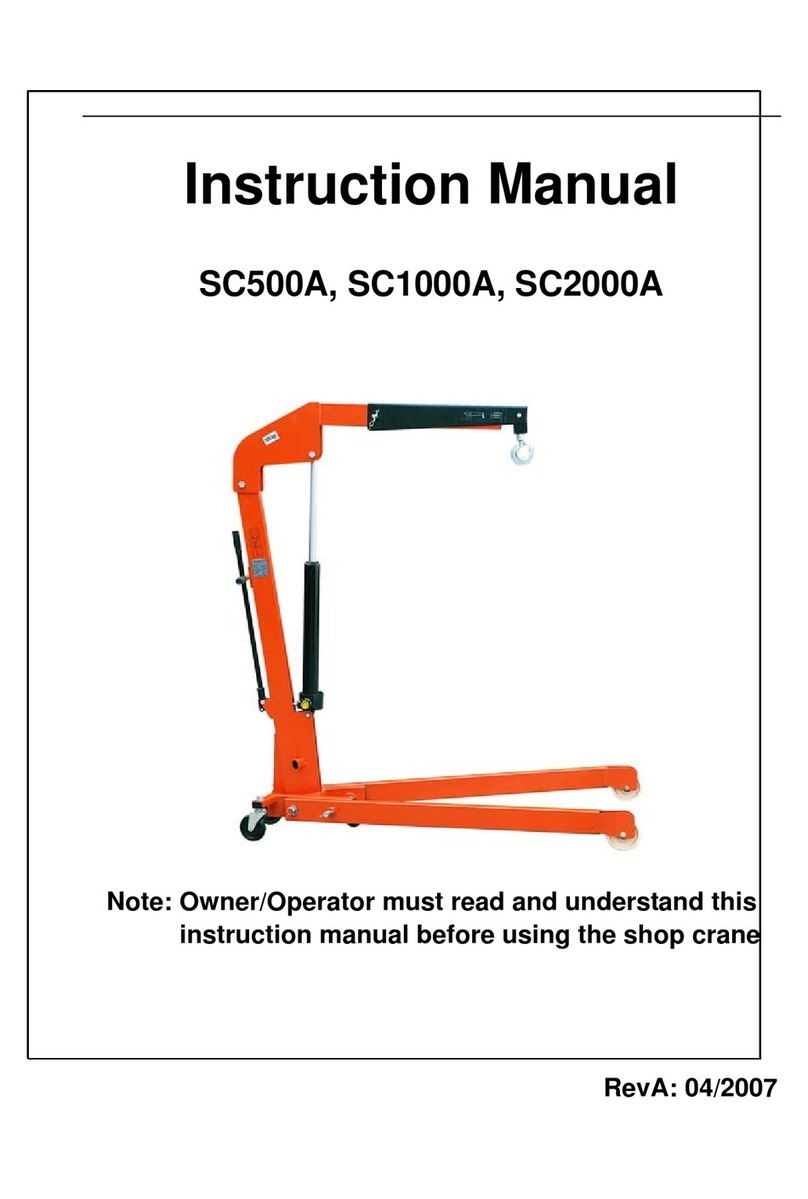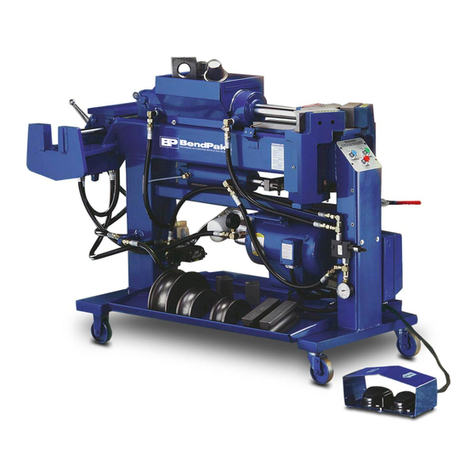Presto GEOSYSTEMS GEOWEB GEOCELLS User manual

PRESTO GEOSYSTEMS
670 NPERKINS STREET,APPLETON,WISCONSIN,USA 54914
920-738-1328 or 800-548-3424 | INFO@PRESTOGEO.COM | WWW.PRESTOGEO.COM
AUGUST 2022
GEOWEB®GEOCELLS
EARTHRETENTIONSYSTEM
INSTALLATION GUIDELINES

AUGUST 2022 COPYRIGHT 2022 –PRESTO GEOSYSTEMS
Subgrade Preparation
GEOWEB Retaining Walls are utilized to support both cut and fill retention situations. In either case, the subgrade soils
that support the structure must be shaped, proof-rolled and trimmed prior to construction of the wall base. In some
instances, this may require removal of weak or compressible native soils and replacement with suitable compacted fill.
Base Preparation
Install the specified geotextile separation layer in accordance
with Manufacturer instructions. See Figure 1.
Place granular base material and compact to 95% of
Standard Proctor Dry Density (SPD) using conventional
equipment and methods. Note, a lesser density on some
granular materials is acceptable.
If a free-draining granular base (no fines) is specified,
encapsulate the base material in a non-woven geotextile.
Figure 1 Geotextile Placement
Installation of GEOWEB® Footing Sections
Option 1: For both straight and curved wall alignments,
insert a series of individual stretcher bars into the expanded
GEOWEB section, position, and fill. See Figure 2 and
Figure 12.
Option 2: Expand and fit the GEOWEB section over the
dowels of a suitably dimensioned stretcher frame.
See Figure 3 and Figure 12. Invert the frame and position the
section to receive infill material. When the section is filled,
remove the frame, and repeat the process.
Option 3: Expand the GEOWEB section into position and
anchor with stakes. See Figure 4. Figure 2 Stretcher Bars for Straight
and Curved Wall Sections
Figure 3 Stretcher Frame
Figure 4 Stake Anchorage
Individual timber
stretcher bar
(50 mm x 50 mm )
Adjust end spacings
between bars to give
required curvature
Threaded rod
dowels
G eo w e b W a ll
Facia section
Distance between
end cells centers
Section width
(variable)
Timber frame
15 mm (5/8”) diameter threaded rod

GEOWEB®GEOCELLS
EARTH RETENTION SYSTEM
INSTALLATION GUIDELINE
AUGUST 2022 COPYRIGHT 2022 –PRESTO GEOSYSTEMS
Drainage, Fill Placement, and Compaction
Typical infilling, compaction, and leveling procedures are shown below and apply to all GEOWEB layers.
See Figure 5, Figure 6, and Figure 7.
Install the specified subdrain and outlet pipes in accordance with contract documents, ensuring that a minimum
gradient of 1% is maintained throughout.
Ensure that the outlet discharge will not cause localized erosion that could undermine the wall.
Overfill the GEOWEB section and backfill zone with granular material approximately 2 in. (50mm) above the cell
walls.
Compact infill and backfill material to 95% Standard Proctor or as specified using conventional equipment and
methods. Note, a lesser density on some granular materials is acceptable. Do not over vibrate the panels to prevent
panels lifting from the cell below. Monitor compaction to ensure the panels are not lifting. Panel lifting and outward
lateral displacement of wall sections indicates that excessive compaction is occurring.
After compaction of each lift, remove excess material to expose the top of the cell walls.
Figure 5 Placing Infill
Figure 6 Compacting Infill
Figure 7 Leveling Infill
Layout and Installation of the GEOWEB Wall Sections
For each wall layer, position each expanded GEOWEB wall section
using either stretcher tools or stakes.
Align and interleaf the ends of adjoining GEOWEB wall sections and
ensure that the upper surfaces of adjoining sections are flush.
Interleaf edges of adjacent sections and connect with ATRA®Wall
Keys.
Overfill the GEOWEB wall sections with the specified infill material
and level to approximately 2 in (50 mm) above the cell wall. (See
above)
Figure 8 Multi-layer Construction

GEOWEB®GEOCELLS
EARTH RETENTION SYSTEM
INSTALLATION GUIDELINE
AUGUST 2022 COPYRIGHT 2022 –PRESTO GEOSYSTEMS
The outer cells of GEOWEB walls are frequently infilled with topsoil to
support a fully vegetated surface cover. A timber board can be placed
over the outer cells during general infilling, and then removed to allow
topsoil infilling.
Compact the infill material to 95% Standard Proctor or as specified
using conventional compaction equipment and methods. Note, a
lesser density on some granular materials is acceptable.
Use walk-behind compaction equipment to compact GEOWEB
section infill. Avoid the use of heavy compaction equipment within
3 ft. (1m) of the wall sections.
Do not over vibrate the panels to prevent panels lifting from the cell
below. Monitor compaction to ensure the panels are not lifting. Panel
lifting and outward lateral displacement of wall sections indicates that
excessive compaction is occurring.
When positioning subsequent layers, ensure 1) that the correct
setback of each layer is maintained and 2) that accurate vertical
alignment of outer cells is maintained.
When working on curved walls, subsequent-layer-setback results in a
radius change from layer-to-layer that eventually causes cell
misalignment. When this is noticed, a correction layer is
accomplished by having that layer setback of 6 in. (15 mm).
Figure 9 GEOWEB Gravity Wall
Layout of Structures with Stepped Base
Figure 10 illustrates a method of calculating horizontal offset dimensions when constructing a GEOWEB wall on a
stepped base. The use of stringlines is recommended to control wall alignment in all situations.
Figure 10 Layout of Structures with Stepped Base
Example
1
3
1
L = 6
Batter = 1:3
Base Slope = 1:6
Facia Offset Ratio = X:L
= 1:(B x L) = 1:(3 x 6) = 1:18
Front Elevation
1
L
Longitudinal Base Slope: (1:L)
Finished Grade at Front of Structure
Plan
X
L
Facia Offset [Ratio (X:L)]
Alignment of Individual
Geoweb Sections
Finished Grade at Front of Structure
Section
Wall batter: (1:B)
1
B

GEOWEB®GEOCELLS
EARTH RETENTION SYSTEM
INSTALLATION GUIDELINE
AUGUST 2022 COPYRIGHT 2022 –PRESTO GEOSYSTEMS
Installation of Geosynthetic Reinforcement (Composite GEOWEB Walls)
Composite walls consist of a reinforced soil mass in
combination with a stacked GEOWEB fascia system. The
outer edge of each layer of synthetic sheet reinforcement,
(geotextile or geogrid), extends between selected GEOWEB
fascia layers. This creates a frictional connection between
the components.
Standard installation procedures for this type of structure are
as follows:
Fill, compact and level successive layers of GEOWEB
fascia sections and associated backfill in the manner
previously described.
At the designated fill elevations, install geosynthetic
reinforcement layer with specified strength in
accordance with Manufacturer’s instructions.
Temporarily secure in position with pins or hand-
placed fill.
The outer edge of the reinforcement layer should be
positioned within 6 in. (150 mm) of the front face of the
GEOWEB fascia sections.
Figure 11 Composite GEOWEB Wall
Position and fill the next GEOWEB layer over the reinforcement layer and with the proper setback and alignment.
Manually tension the reinforcement by pulling it back from the infilled GEOWEB wall sections. The reinforcement
can be pinned or held taut by hand.
Place and compact backfill over the extended sheet reinforcement. Rubber-tired equipment can operate directly on
the reinforced zone using care to avoid sudden stops and sharp turns. Tracked equipment can operate within the
reinforced zone provided that a minimum 6 in. (150 mm) lift of fill has been placed over the reinforcement layer.
Continue the construction sequence for the balance of the work.
Dimensions and Weights of Palletized GEOWEB® Sections
GEOWEB sections are normally tri-folded and palletized for shipment to the site. Table 1 provides typical pallet
dimensions and weights for a range of section and cell sizes. The number of wall panels per pallets will vary based on the
cells in length.
Table 1 V-Series GEOWEB Shipping Dimensions and Weights
Cell Depth Pallet Dimensions Minimum Weight Maximum Weight
6 in. (150 mm)
and 8 in. (200
mm)
42 in. x 42 in. (1070 mm x 1070 mm) 800 lb. (360 kg) 1,450 lb. (660 kg)
Stacked
Geoweb
Facia
Sheet Reinforcement
Subdrain
Reinforced Soil Zone

GEOWEB®GEOCELLS
EARTH RETENTION SYSTEM
INSTALLATION GUIDELINE
AUGUST 2022 COPYRIGHT 2022 –PRESTO GEOSYSTEMS
Infill Volumes
Table 2 Infill Volumes for the GEOWEB GW30V Wall Section
Cell Depth 6 in. (150 mm) 8 in. (200 mm)
Volume (m³/ 100 m² of area) 15 m³ 20 m3
Volume (yd³/ 100 yd² of area) 16.7 yd³ 22.3 yd3
Tools and Equipment
Installation efficiency is greatly improved by the appropriate choice of construction equipment and tools. The following
guidelines apply to most GEOWEB system applications. Non-standard tools and equipment may provide additional
benefits in some situations.
Table 3 Standard Construction Tools for Installation of the GEOWEB®System
GEOWEB Components Power Tools Concrete Finishing Surveying Equipment
ATRA Tendon & Stake
Clips/Anchors Heavy-duty drill Bull floats Surveyor’s auto-level
ATRA Key Connection
Device Circular saw Hand floats Tripod and rod
Hand Tools Percussion hammer Steel trowels Laser beacons
Shovels and spades Stanley-Bostitch stapler Poker vibrators Audio target receiver
Rakes and screed bars SB103020 wire staples Tamping rods Survey stakes
Sledgehammers Gas generator Markers + spray cans
Crowbars Air compressor Stringlines + spirit level
Utility knives Electric Impact Hammer
Spikes, nails + lumber ATRA Anchor Driving Tool and
Gad
Templates
Excavation and Materials Handling Equipment
Conventional excavators, front-end loaders, mini-excavators, and skid-steer loaders, equipped with smooth-edged
buckets, are normally employed for the installation of GEOWEB systems. Infilling of GEOWEB sections can also be
carried out with conveyors, chutes, and skips. As a rule, the overall rate of installation relates directly to the speed and
efficiency of infill placement and compaction.
Compaction Equipment
Compaction of GEOWEB section wall infill and backfill is normally carried out with walk-behind plate tampers and
vibratory drum rollers. Large smooth-drum and sheepsfoot riding compactors can be utilized for backfill compaction of
large structures. Do not over vibrate the panels to prevent panels lifting from the cell below. Monitor compaction to ensure
the panels are not lifting. Panel lifting and outward lateral displacement of wall sections indicates that excessive
compaction is occurring.

GEOWEB®GEOCELLS
EARTH RETENTION SYSTEM
INSTALLATION GUIDELINE
AUGUST 2022 COPYRIGHT 2022 –PRESTO GEOSYSTEMS
Limited Warranty
Presto Geosystems warrants each GEOWEB section which it ships to be free from defects in materials and workmanship at the
time of manufacture. Presto’s exclusive liability under this warranty or otherwise will be to furnish without charge to Presto's
customer at the original f.o.b. point a replacement for any section which proves to be defective under normal use and service
during the 10-year period which begins on the date of shipment by Presto. Presto reserves the right to inspect any allegedly
defective section in order to verify the defect and ascertain its cause.
This warranty does not cover defects attributable to causes or occurrences beyond Presto's control and unrelated to the
manufacturing process, including, but not limited to, abuse, misuse, mishandling, neglect, improper storage, improper
installation, improper alteration, or improper application.
Presto makes no other warranties, express or implied, written or oral, including, but not limited to, any warranties or
merchantability or fitness for any particular purpose, in connection with the GEOWEB system. In no event shall Presto be liable
for any special, indirect, incidental or consequential damages for the breach of any express or implied warranty or for any other
reason, including negligence, in connection with the GEOWEB system.
Geosystems®, GEOWEB®, and ATRA® are registered trademarks of Reynolds Presto Products, Inc.

GEOWEB®GEOCELLS
EARTH RETENTION SYSTEM
INSTALLATION GUIDELINE
COPYRIGHT 2022 –PRESTO GEOSYSTEMS AUGUST 2022
Stretcher Frame & Bar Details
Figure 12 Stretcher Frame & Bar Details
Table of contents
Other Presto GEOSYSTEMS Construction Equipment manuals
